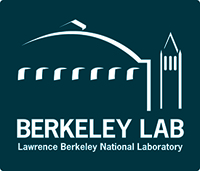Newswise — Results from a new scientific study may shed light on a mismatch between predictions and recent measurements of ghostly particles streaming from nuclear reactors -- the so-called “reactor antineutrino anomaly,” which has puzzled physicists since 2011.
The anomaly refers to the fact that scientists tracking the production of antineutrinos -- emitted as a byproduct of the nuclear reactions that generate electric power -- have routinely detected fewer antineutrinos than they expected. One theory is that some neutrinos are morphing into an undetectable form known as “sterile” neutrinos.
But the latest results from the Daya Bay reactor neutrino experiment, located at a nuclear power complex in China, suggest a simpler explanation -- a miscalculation in the predicted rate of antineutrino production for one particular component of nuclear reactor fuel.
Antineutrinos carry away about 5 percent of the energy released as the uranium and plutonium atoms that fuel the reactor split, or “fission.” The composition of the fuel changes as the reactor operates, with the decays of different forms of uranium and plutonium (called “isotopes”) producing different numbers of antineutrinos with different energy ranges over time, even as the reactor steadily produces electrical power.
The new results from Daya Bay -- where scientists have measured more than 2 million antineutrinos produced by six reactors during almost four years of operation -- have led scientists to reconsider how the composition of the fuel changes over time and how many neutrinos come from each of the decay chains.
The scientists found that antineutrinos produced by nuclear reactions that result from the fission of uranium-235, a fissile isotope of uranium common in nuclear fuel, were inconsistent with predictions.
“The model predicts almost 8 percent more antineutrinos coming from decays of uranium-235 than what we have measured,” said Kam-Biu Luk, a Daya Bay Collaboration co-spokesperson who is a faculty senior scientist at the Department of Energy’s Lawrence Berkeley National Laboratory (Berkeley Lab) and a physics professor at UC Berkeley.
Patrick Tsang, who conceptualized a new data-analysis technique that was key in this study while working as a postdoctoral fellow in Berkeley Lab’s Physics Division, added, “The finding is surprising because it is the first time we are able to identify the disagreement with predictions for a particular fission isotope.” Tsang is now a project scientist working at SLAC National Accelerator Laboratory.
Meanwhile, the number of antineutrinos from plutonium-239, the second most common fuel ingredient, was found to agree with predictions, although this measurement is less precise than that for uraninum-235.
If sterile neutrinos -- theoretical particles that are a possible source of the universe’s vast unseen or “dark” matter -- were the source of the anomaly, then the experimenters would observe an equal depletion in the number of antineutrinos for each of the fuel ingredients, but the experimental results disfavor this hypothesis.
The latest analysis suggests that a miscalculation of the rate of antineutrinos produced by the fission of uranium-235 over time, rather than the presence of sterile neutrinos, may be the explanation for the anomaly. These results can be confirmed by new experiments that will measure antineutrinos from reactors fueled almost entirely by uranium-235.
The work could help scientists at Daya Bay and similar experiments understand the fluctuating rates and energies of those antineutrinos produced by specific ingredients in the nuclear fission process throughout the nuclear fuel cycle. An improved understanding of the fuel evolution inside a nuclear reactor may also be helpful for other nuclear science applications.
Situated about 32 miles northeast of Hong Kong, the Daya Bay experiment uses an array of detectors to capture antineutrino signals from particle interactions occurring in a series of liquid tanks. The Daya Bay collaboration involves 243 researchers at 41 institutions in the U.S., China, Chile, Russia and the Czech Republic.
Daya Bay physics research is supported by the U.S. Department of Energy’s Office of Science and the National Science Foundation.
# # #
Lawrence Berkeley National Laboratory addresses the world’s most urgent scientific challenges by advancing sustainable energy, protecting human health, creating new materials, and revealing the origin and fate of the universe. Founded in 1931, Berkeley Lab’s scientific expertise has been recognized with 13 Nobel Prizes. The University of California manages Berkeley Lab for the U.S. Department of Energy’s Office of Science. For more, visit www.lbl.gov.
DOE’s Office of Science is the single largest supporter of basic research in the physical sciences in the United States, and is working to address some of the most pressing challenges of our time. For more information, please visit science.energy.gov.
Contact Information
Jun Cao, co-spokesperson, IHEP, +86-10-88235808, [email protected]
Kam-Biu Luk, co-spokesperson, UC Berkeley and Lawrence Berkeley National Laboratory, 510-642-8162, 510-486-7054, [email protected] or [email protected]
The collaborating institutions of the Daya Bay Reactor Neutrino Experiment are Beijing Normal University, the U.S. Department of Energy’s (DOE) Brookhaven National Laboratory, California Institute of Technology, Charles University in Prague, Chengdu University of Technology, China General Nuclear Power Group, China Institute of Atomic Energy, Chinese University of Hong Kong, Dongguan University of Technology, East China University of Science and Technology, Joint Institute for Nuclear Research, University of Hong Kong, Institute of High Energy Physics, Illinois Institute of Technology, Iowa State University, DOE’s Lawrence Berkeley National Laboratory, Nanjing University, Nankai University, National Chiao-Tung University, National Taiwan University, National United University, National University of Defense Technology, North China Electric Power University, Princeton University, Pontifical Catholic University of Chile, Rensselaer Polytechnic Institute, Shandong University, Shanghai Jiao Tong University, Shenzhen University, Siena College, Temple University, Tsinghua University, University of California at Berkeley, University of Cincinnati, University of Houston, University of Illinois at Urbana-Champaign, University of Science and Technology of China, Virginia Polytechnic Institute and State University, University of Wisconsin-Madison, College of William and Mary, Xi’an Jiao Tong University, Yale University, and Sun Yat-Sen (Zhongshan) University.
A complete list of funding agencies for the experiment can be found in the scientific paper: “Evolution of the Reactor Antineutrino Flux and Spectrum at Daya Bay.”
